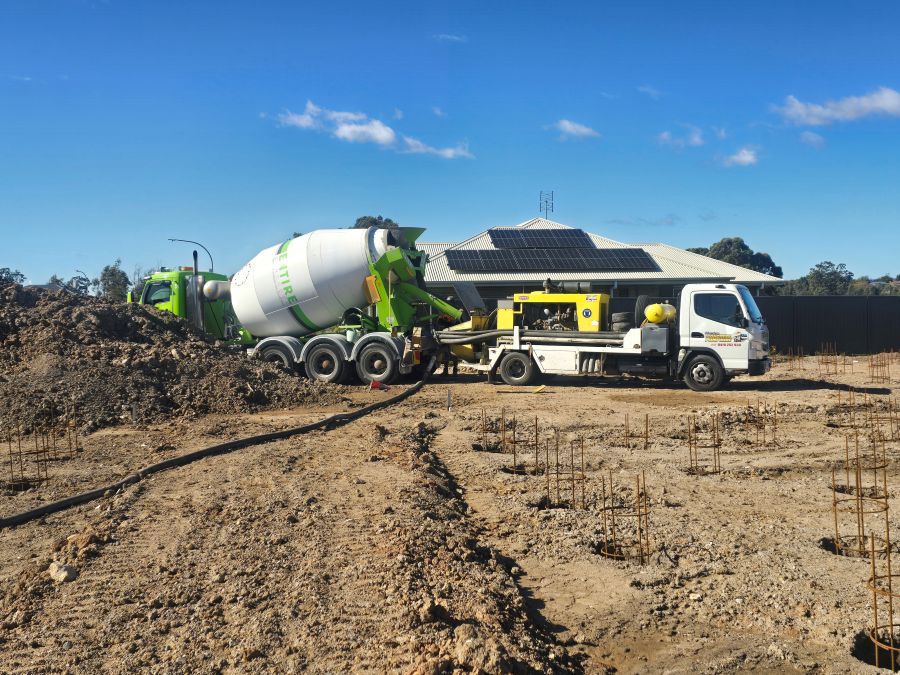Essential Best Practices for Enhancing Safety in Concrete Pumping Operations in 2025
In the evolving landscape of concrete pumping safety throughout 2025, it becomes increasingly important to focus on comprehensive training, meticulous equipment inspections, clearly defined exclusion zones, and detailed pre-start planning. Acknowledging the inherent hazards associated with concrete pumping while strictly adhering to established safety protocols is crucial for preventing accidents and facilitating smooth construction workflows. By prioritising these vital safety measures, workers can cultivate a secure working environment that not only boosts efficiency but also enhances productivity, ultimately paving the way for successful project completions.

Identifying and Addressing Common Hazards in Concrete Pumping Operations
According to SafeWork NSW, operators and workers involved in concrete placement face significant risks during the setup and operation of concrete pumps. These hazards may encompass:
- Unstable ground conditions or improper setups on sloped surfaces, which can result in severe accidents.
- Utilising equipment beyond its design specifications, which increases the risk of mechanical failures.
- Working in proximity to overhead power lines, which presents serious electrocution risks.
- Collisions with trucks, structures, or site personnel, potentially leading to significant injuries.
- Hose whip and line surges, which can create dangerous scenarios if not properly managed.
- Unforeseen equipment failures and blockages that could disrupt operations.
- Exposure to crush zones, diesel fumes, and excessive noise levels, all of which can negatively impact health.
- Slip, trip, and confined space hazards that may result in serious injuries.
These risks are not merely theoretical; they often arise when safety procedures are overlooked or not enforced consistently. Therefore, our unwavering commitment focuses on critical safety elements on-site, ensuring that every worker is well-informed and adheres to established protocols for a safer working environment.
1. Emphasise Training and Certification for Every Team Member
Given that concrete pumps operate under high pressure, the stringent handling requirements for operators are paramount. In NSW, it is imperative that operators possess:
- An HR licence for operating boom trucks, confirming their qualifications.
- A verified VOCs (Verification of Competency) to validate their skill level.
- Training in hazard recognition and a thorough understanding of emergency stop procedures.
Moreover, hose handlers must receive comprehensive briefings to ensure they avoid standing in discharge zones and can swiftly identify blockages—critical for maintaining operational safety and preventing accidents.
2. Implement Exclusion Zones to Enhance Safety Protocols
Concrete under pressure moves rapidly and can pose extreme dangers if released suddenly. Therefore, it is crucial to have clearly marked safety zones surrounding the hose and boom at all times. Essential safety measures include:
- Utilising barriers and flagging to delineate risk areas around the pumping operation.
- Prohibiting personnel from standing in front of the discharge area to avert injuries.
- Restricting movements beneath booms to minimise accident risks.
3. Conduct Thorough Equipment Inspections Prior to Each Pour
Every concrete pumping job begins with an extensive equipment inspection. At Hunter Concrete Pumps, we meticulously check:
- Hoses and reducers to confirm they are in optimal working condition.
- Couplings and clamps to ensure secure connections.
- The integrity of the boom and seals to prevent any leaks.
- Primer levels, ensuring the pump operates smoothly and efficiently.
- Emergency shutoff systems to guarantee immediate response capabilities in case of an incident.
No operation commences without the pump successfully passing all inspections, reinforcing our steadfast commitment to safety and operational efficiency.
4. Appoint a Lead Operator for Optimal Coordination
Effective communication is vital for the success of concrete pumping operations. Each crew must designate one lead operator responsible for overseeing the pour and ensuring coordination with:
- Agitator drivers to synchronise operations for a seamless pour.
- Hose handlers who manage the flow of concrete safely and efficiently.
- Site supervisors to ensure strict compliance with site regulations.
- Concreters and finishers to achieve the desired project outcomes.
This clear hierarchy is essential for avoiding mistakes and miscommunications, ultimately enhancing both the safety and efficiency of the operation.
5. Initiate Every Pour with a Comprehensive Safety Briefing
Before commencing pump operations, it is crucial for the crew to discuss several critical topics, including:
- Site access and hose routing for optimal flow management.
- Emergency response plans and first aid protocols to ensure preparedness.
- Truck staging and washout procedures to maintain site cleanliness and order.
- Identifying slip risks and ensuring the appropriate use of PPE (Personal Protective Equipment) for each crew member.
- Defining the roles of spotters where necessary to further enhance safety.
At Hunter Concrete Pumps, we rigorously enforce these protocols on every job without exception, ensuring the safety of our crew and the integrity of the project.
Understanding the Crucial Importance of Safety in Concrete Pumping Operations
Ensuring safe concrete pours not only protects your crew but also preserves your project timeline, budget, and reputation. A lapse in safety can lead to injuries, project delays, or regulatory scrutiny—risks that cannot be overlooked. We strictly adhere to the SafeWork NSW guidelines for concrete pumping on every job. Our operators are not only trained but also licensed and insured, ensuring that when you select our services, you are choosing a provider that integrates safety into every aspect of the process.
Is it Necessary to Have Spotters or Safety Personnel for My Concrete Pour?
For civil and commercial job sites, the answer is a resounding yes; spotters or safety personnel are vital for upholding high safety standards. However, for residential projects, our dedicated pump crews are skilled at managing the safety zones effectively, ensuring the site remains secure. We will inform you of any specific requirements during the quoting process to ensure clarity and compliance.
What Are the Most Frequent Safety Risks Associated with Concrete Pumping Jobs?
The three primary risks include untrained hose handling, inadequate access planning, and the absence of exclusion zones. We proactively address all three of these critical issues before the concrete pour begins, ensuring a safer working environment for all personnel involved in the operation.
Achieve Smooth and Safe Concrete Pours with Our Expertise
Concrete pumping safety is not merely about complying with regulations; it revolves around ensuring the job is completed without incidents or delays. When your team is well-versed in safety procedures and your operator arrives fully equipped and prepared, the concrete pour can progress smoothly, swiftly, and without complications, thereby paving the way for successful project outcomes.
Concrete Pump Hire
The Article: Concrete Pumping Safety Protocols: 2025’s Top 5 Tips first appeared on https://writebuff.com
The Article Concrete Pumping Safety Tips: Top 5 Protocols for 2025 Was Found On https://limitsofstrategy.com
